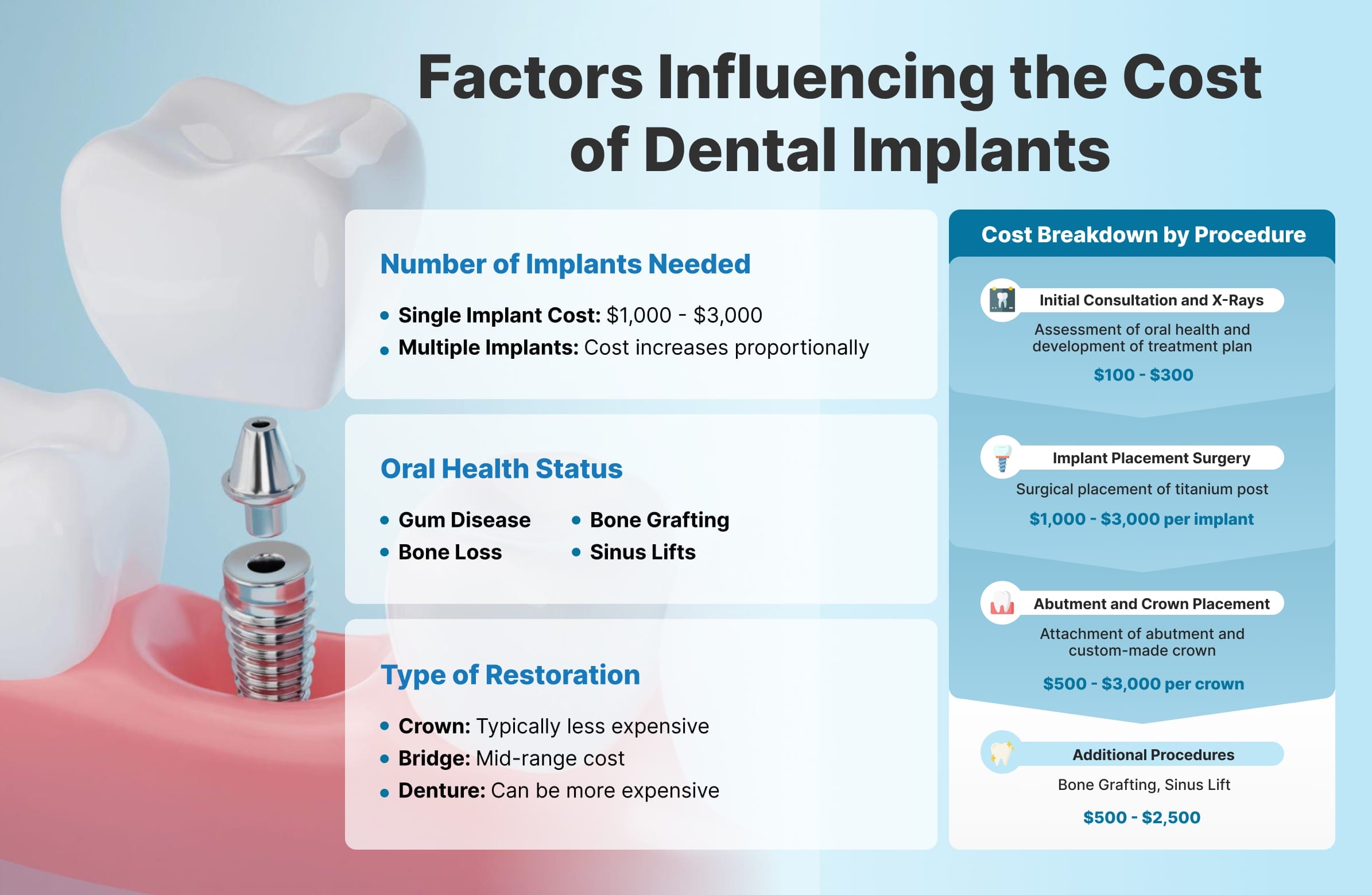The Greatest Guide To Dental Sense
Table of ContentsThe Single Strategy To Use For Dental SenseNot known Incorrect Statements About Dental Sense Everything about Dental SenseFacts About Dental Sense Revealed
are medical tools operatively implanted into the jaw to recover an individual's capacity to chew or their look. They provide support for synthetic (phony) teeth, such as crowns, bridges, or dentures. When a tooth is lost as a result of injury or condition, a person can experience issues such as fast bone loss, faulty speech, or adjustments to eating patterns that result in discomfort.Oral implant systems contain an oral implant body and oral implant joint and might additionally consist of an abutment addiction screw. Professional teeth whitening. The dental implant body is surgically inserted in the jawbone instead of the tooth's root. The oral implant abutment is usually affixed to the dental implant body by the joint fixation screw and expands with periodontals into the mouth to sustain the affixed artificial teeth
(https://telegra.ph/Transform-Your-Smile-Dental-Implants-Root-Canal-Procedures-and-Professional-Teeth-Whitening-01-11)Framework of The Dental Implant System choosing dental implants, talk to your dental provider regarding the potential benefits and threats, and whether you are a candidate for the procedure. Points to consider: Your total wellness is a crucial element in figuring out whether you are a good candidate for oral implants, for how long it will certainly require to recover, and for how long the implant might remain in location.
Smoking cigarettes might impact the recovery procedure and lower the long-term success of the dental implant. The recovery procedure for the implant body might take a number of months or longer, during which time you normally have a short-term abutment in area of the tooth. the dental implant treatment: Thoroughly follow the dental hygiene directions offered to you by your dental provider.
The 4-Minute Rule for Dental Sense
Implant failure can cause the demand for an additional procedure to fix or replace the implant system. Restores the capacity to chew Brings back aesthetic appearance Helps maintain the jawbone from reducing due to bone loss Protects the health of the surrounding bone and gum tissues Assists keep surrounding (nearby) teeth stable Enhances high quality of life Damage to surrounding natural teeth during dental implant positioning Injury to the surrounding cells during surgical treatment, such as sinus opening Injury during surgical procedure (as an example, crack of surrounding jawbone) Inadequate feature, such as seeming like the teeth do not attack with each other generally A feeling that the tooth is loosened or turning in position arising from a joint screw loosening Implant body failure (looseness of the implant body) due to systemic infection, which might be more likely in clients with unrestrained diabetes mellitus due to local infection in bone and gum tissues supporting the dental implant body due to postponed recovery, which may be most likely in patients who smoke Difficulty cleaning up the gum tissues around the dental implant, causing bad dental health Unattended click to find out more gum disease Post-surgical tingling because of nerve impingement or damage Constantly inform wellness care companies and imaging professionals that you have oral implants before any magnetic vibration imaging (MRI) or x-ray treatments.
FDA is not familiar with any type of negative occasions reported for MRI or x-ray procedures with oral implants. Dental implants systems are generally constructed from products that follow international consensus standards of the International Company for Standardization (ISO) or ASTM International. These criteria have details of what makes a risk-free product.

An oral implant is a framework that replaces a missing out on tooth. With screw-like devices, the surgeon inserts a dental implant right into the jawbone, and it functions as an anchor for an artificial tooth, called a crown. A device called an abutment links the man-made tooth to the oral implant. The crown is custom-made to fit the individual's mouth and match the color of their teeth.
5 Easy Facts About Dental Sense Explained
Some individuals are not qualified for oral implant surgery. It is for dental specialists to operate on people with: intense illnessuncontrollable metabolic diseasebone or soft cells illness or infectionIf these issues are fixed, an individual can have the surgical treatment. In, oral cosmetic surgeons refrain from operating people with: If individuals with any one of the above go through oral implant surgical procedure, there is a higher threat of the implant failing.

Dental dental implant surgical procedure is an individualized procedure. It's not the same for every person. But the adhering to offers a general introduction of what you can expect your dentist, dental doctor, periodontist or prosthodontist to do: Position the dental implant surgically. Offer you time to heal. Attach the message and final crown, bridge or denture.
Next off, your surgeon will carefully position the dental implant right into your jaw. If your dental implant is near the front of your mouth, your dental professional will make a short-lived tooth for you to use up until you heal.
More About Dental Sense
Throughout the recovery stage, your jawbone must fuse to the oral implant. This procedure can take anywhere from three to 9 months.
When your implant heals, your dental professional can connect the abutment (small adapter post) and your last reconstruction (crown, bridge or denture). This usually takes about one hour to complete and may require a second small surgical treatment. You should not feel any type of pain during your dental implant treatment because your supplier will certainly use drug to numb your gum tissues.